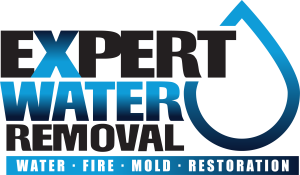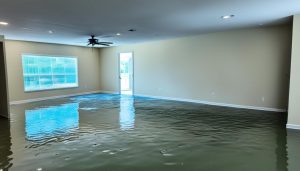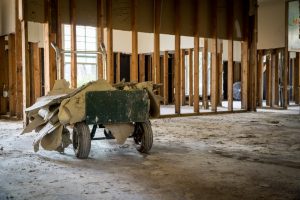Imagine walking into your home to find an unwelcome surprise: a sewage backup. It’s a homeowner’s nightmare. The big question is: Is it safe to stay in house after sewage backup?
This situation not only worries about home cleanliness. It also makes us think about health risks.
Understanding the severity of a sewage backup is key. It helps us know what to do next. The area affected and how long we were exposed are important. This article will help you understand how to deal with this situation.
We will talk about health risks, what to do first, and how to prevent future backups. Stay with us to learn how to handle this problem.
Understanding Sewage Backups
Sewage backups happen when wastewater can’t flow right through your home’s pipes. It then flows back into your home. Knowing the causes of sewage backup is key to stopping it. Common reasons include clogged pipes from grease or objects, tree roots in sewer lines, and too much water in the sewer system during heavy rain.
Spotting the signs of sewage backup early is important. This way, you can fix problems before they get worse. Look out for:
- Water stains around drains and on walls
- Foul smells from drains and plumbing
- Strange gurgling sounds in your pipes
Being alert to these signs is crucial. They mean there’s a problem with your home plumbing issues that needs fixing fast. Catching these signs early helps avoid big damage and health risks.
Health Risks Associated with Sewage Backup
Sewage backups are not just a hassle; they can be dangerous. They pose serious health risks. Contact with contaminated water can lead to many health problems. Sewage often contains harmful bacteria, viruses, parasites, and fungi.
Being exposed to these pathogens can cause severe bacterial infections. Gastroenteritis, caused by bacteria like E. coli and Salmonella, is a common illness. Symptoms include diarrhea, vomiting, and stomach pain, leading to dehydration and discomfort.
Toxic substances in sewage, like chemicals and heavy metals, also pose risks. These can cause skin irritations, chemical burns, and long-term health problems like liver and kidney damage. Hepatitis A, a viral infection affecting the liver, is also a concern with sewage backups.
Long-term exposure to sewage can also lead to respiratory problems. Breathing in contaminated water droplets or stagnant air can cause lung infections, chronic bronchitis, and worsen asthma. Respiratory issues can affect anyone, especially those with preexisting conditions or weakened immune systems.
- Personal Protective Equipment (PPE): Using PPE, like gloves, masks, and waterproof boots, can greatly reduce the risk of harmful contact.
- Professional Cleaning Services: Hiring professional cleaning services ensures thorough disinfection and reduces health risks from sewage exposure.
It’s important to understand and mitigate sewage exposure health risks. This is key to protecting oneself from bacterial infections and the dangers of toxic substances in sewage. Taking quick and proper actions can help keep health safe and prevent disease spread from sewage backups.
Immediate Steps to Take After a Sewage Backup
When you find out there’s a sewage backup, it’s important to act fast. This helps keep you and your property safe. Here’s what to do right away:
- Evacuate the Affected Area: If sewage has spilled into living spaces, get out of there. It’s a safety measure to avoid harmful substances.
- Shut Off Electricity and Water: If it’s safe, turn off the power and water to the affected area. This step helps prevent more damage and electrical dangers.
- Contact Professional Services: Call for emergency sewage cleanup or professional help right away. They have the right tools and know-how to fix the problem safely.
- Document the Damage: Take pictures and notes of the damage. This is important for insurance claims and future records.
While waiting for professionals, homeowners can take some steps to reduce damage:
- Protect Uncontaminated Areas: Use plastic sheeting or barriers to keep contaminants out of clean areas of your home.
- Wear Protective Gear: When doing any cleanup, wear gloves, masks, and other protective gear. It’s key to avoid touching harmful substances.
While homeowners can do some initial steps, big sewage cleanup jobs need certified pros. They do a thorough job, keeping your home and health safe from sewage dangers.
Is it safe to stay in house after sewage backup?
After a sewage backup, checking if it’s safe to stay is key. You need to look at both the immediate dangers and how it affects the home long-term. Often, it’s best to move out until it’s safe again.
First, see how bad the mess is. If sewage got into living areas, it’s not safe. Here are some things to check:
- Look for any damage to the structure or mold
- Make sure all dirty areas are cleaned well
- Check that important things like electricity, gas, and water work
Health officials must check the home to say it’s safe. They look at how clean it is and if it’s safe to live there. Only when they say it’s okay should you go back.
Getting important services like electricity, gas, and water back is also crucial. Without these, the home is not safe. Fixing these fast is very important.
Finally, cleaning the home well is key. This means using strong cleaners and wearing the right gear. It’s best to get professionals to do this.
In short, staying in a home after a sewage backup depends on a few things. These include how well it’s cleaned, if services are working, and health checks. Homeowners should focus on safety and might need to move out until it’s safe again.
Preventing Future Sewage Backups
Keeping your home safe and healthy means stopping sewage backups before they start. To do this, you need to take proactive steps and keep up with plumbing maintenance.
Start by getting your plumbing checked regularly by a licensed plumber. These checks can spot problems early and keep your plumbing system working well. This helps prevent blockages and backups.
It’s also important to not put the wrong things down your drain. Grease, oils, wipes, and feminine products can clog your pipes. Teach everyone in your house how to dispose of these items correctly to help prevent backups.
Another good idea is to install a backwater valve. This device stops wastewater from coming back into your home. It’s especially useful in areas that get a lot of rain or flood.
By following these steps, you can avoid the mess and health risks of sewage backups. You’ll also make your plumbing last longer. Keeping up with plumbing maintenance and using a backwater valve makes your home a safer place to live.
Conclusion
Experiencing a sewage backup can be scary and dangerous. It’s important to know what causes these problems and the health risks they bring. Sewage backups can bring harmful germs and pollutants into your home, making quick action necessary.
When dealing with a sewage backup, acting fast is key. First, turn off the water, move out of the area, and call professional cleaners. Whether it’s safe to stay in your home depends on the damage and how well it’s cleaned. Cleaning and disinfecting properly is vital to keep your home healthy.
Preventing sewage backups is also crucial. Keeping your plumbing in good shape, disposing of waste correctly, and being careful with what goes down drains can help. This article has given you tips to handle sewage backups well and keep your home safe.








